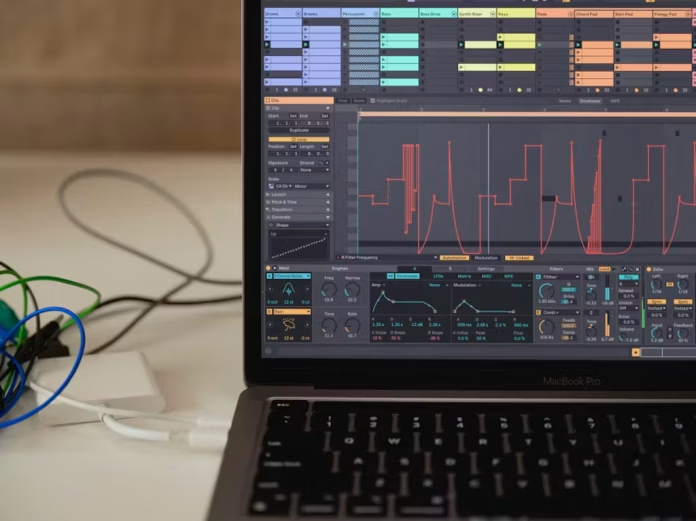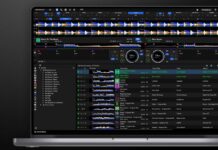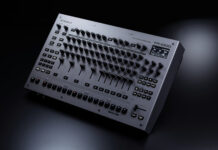Ableton just announced a rent-to-own plan for its flagship software – the Live 12 Suite – and it’s already making waves. For years, the biggest barrier to entry with Ableton hasn’t been the learning curve – it’s been the price tag. Suite runs $749 upfront, which for most bedroom producers, students, or DJs dabbling in production feels like a brutal financial hurdle. Sure, you could limp along with Live Lite, catch a sale, or settle for Intro or Standard, but the full Suite – with Max for Live, all the instruments, and every device – has always been a commitment. Rent-to-own changes that equation by putting Suite in reach for $19/month.
Why the phrase “Subscription” still makes producers twitch
Say “subscription” around producers and watch the collective eye-roll. The term brings up three nightmares:
- Stop paying, lose access.
- No clear endpoint.
- You never actually own the software.
That’s the Adobe Creative Cloud model – an endless treadmill that bleeds you dry while your projects live on borrowed time. Ableton’s rent-to-own sidesteps that. You pay $19 a month until you’ve reached the full purchase price, and then the license is yours forever. No markup, no hidden interest. You can pause payments if you’re in a financial slump, and you get the full Suite on day one. For as long as you’re paying, it feels like a subscription – but unlike a true subscription, there’s a finish line.
Where Ableton’s rent-to-own sits in the DAW Payment Landscape
Let’s look at a few of the other DAW programs in the production world first – for example:
- Adobe Creative Cloud – Pay forever, own nothing. Classic trap.
- FL Studio – One-time buy, lifetime free updates. Still the most generous model out there.
- Logic Pro – A clean, one-time $199. Cheap, stable, permanent.
- Pro Tools – A maze of subscription plans, perpetual licenses, and support fees.
Ableton’s rent-to-own isn’t as generous as FL Studio’s free updates, nor as affordable as Logic’s one-time buy. But it’s far from Adobe’s no-exit prison. It lives in the middle – financing disguised as subscription, with ownership at the end.
The fine print that still hurts
Though it’s definitely an appealing concept overall, there are noteworthy drawbacks to consider:
- Pause isn’t infinite – You can pause, but not forever. Stretch it too long, and your plan expires.
- The leash effect – Until the final payment clears, Ableton controls your license. Stop paying, and your projects lock up.
- It still feels like a subscription – For 24 months, the psychology is the same: keep paying or lose access.
- The sunk-cost trap – Drop out halfway and you’ve spent hundreds with nothing to show for it. That sting is real.
Why you should care – and why it matters
That said, this plan is about time as much as money. It means you can focus on making tracks instead of worrying about whether you can afford Suite upfront, or worse, wasting creative energy swapping between crippled demos and cracked installs. Plus, more pros include:
- Accessibility without compromise – $19/month is cheaper than a night out, but you’re getting a flagship DAW, not a watered-down version.
- Real ownership at the end – Unlike Splice’s plugin rent-to-own or Adobe’s “forever rent,” this ends in a permanent license.
- Day-one pro features – Max for Live, Operator, Wavetable, all the instruments and FX – you’re not building your skills on a crippled version.
- Pause without punishment – If your income is irregular (gigs drying up, tour delays, school costs), you don’t have to cancel and start over.
Ultimately, it’s worth considering because when it comes down to it, tools shape habits. If you’re already running Live 11 Suite and wondering if the upgrade is worth it, this plan lowers the friction of staying current. If you’ve been on Lite for years or bouncing between demos and cracked versions, rent-to-own means you can finally build your workflow in the full environment without sacrificing rent money. It’s Ableton admitting that the upfront buy-in was scaring people off – and instead of going the dreaded subscription route (like Adobe), they’ve found a way to make it more accessible while still keeping ownership on the table.
A producer’s take: somewhere between relief and frustration
From a practical perspective, this is huge. Bedroom producers no longer need to pirate Live or scrape together $749 just to make the jump. DJs who’ve been messing around in Lite can now build their live sets with full Suite devices. Even veteran producers might find it an easier way to upgrade without hitting their cash flow. But it’s not perfect. For two years, you’re still at the mercy of monthly payments, and if you flake or your income dips too long, you risk losing everything mid-project.
Still, compared to Adobe’s endless rent or Pro Tools’ licensing nightmare, Ableton’s offer feels almost generous. There’s no sneaky markup, no “introductory price” bait-and-switch. Just financing with a softer landing. It’s not the dream model – that’s still FL Studio’s lifetime free updates – but it’s a step closer to making professional tools available to everyone.
Our verdict: financing, with training wheels
Ableton is right: this isn’t a subscription. It’s financing with a finish line. That distinction matters. Producers don’t want to rent their tools forever – they want to own them. For 24 months, rent-to-own will feel like a subscription. Ableton controls access until the balance is cleared. But unlike Adobe’s treadmill, there’s an exit ramp. Cross it, and the license is yours forever.
The smarter pitch isn’t “not a subscription.” It’s: “Own Live Suite for $19/month, without dropping $749 up front.”
That’s the kind of straight talk producers respect – and exactly why this plan deserves a look, whether you’re starting fresh or upgrading your studio.
You can sign up for the rent-to-own plan on the Ableton website here.












